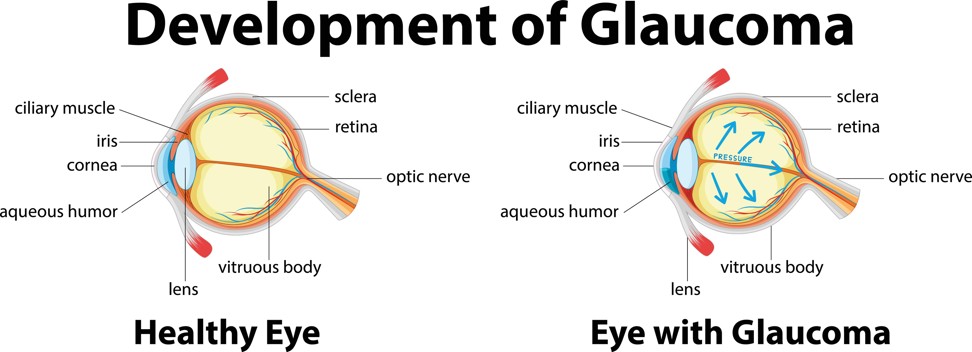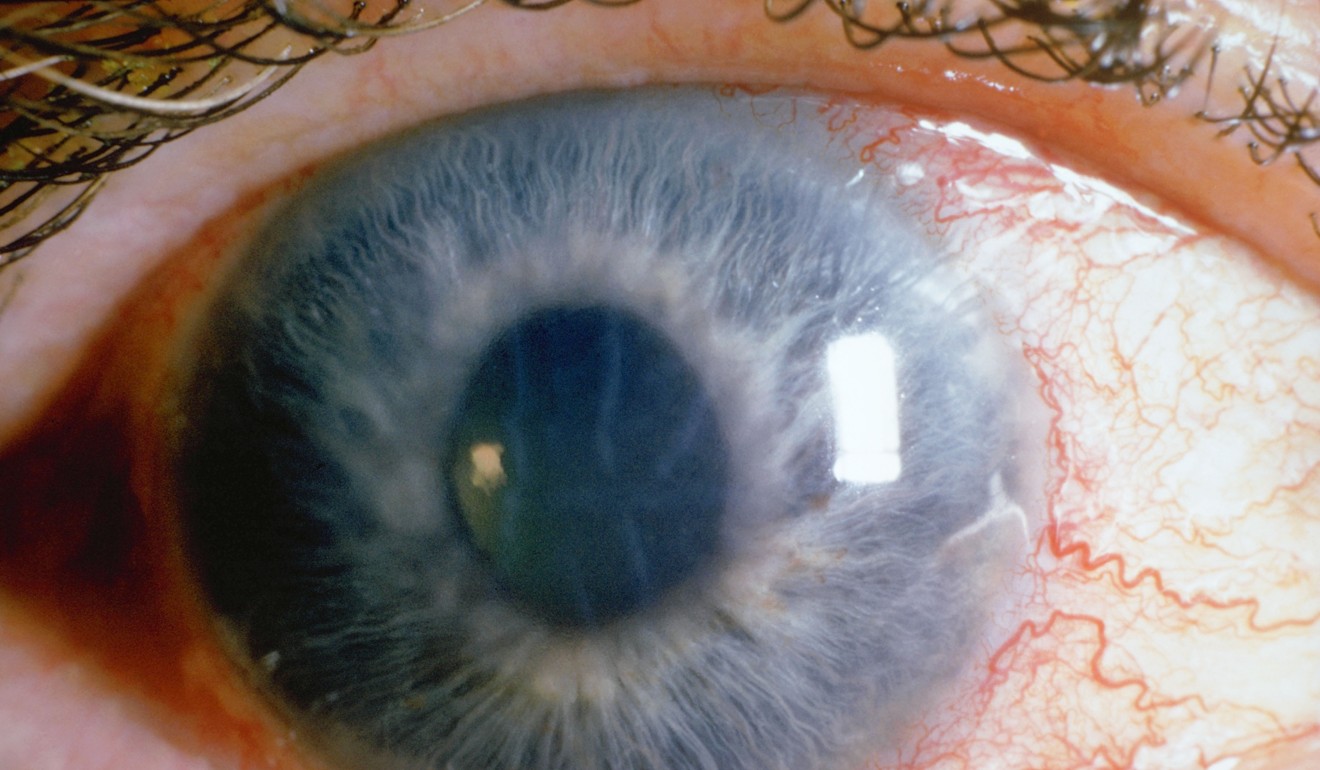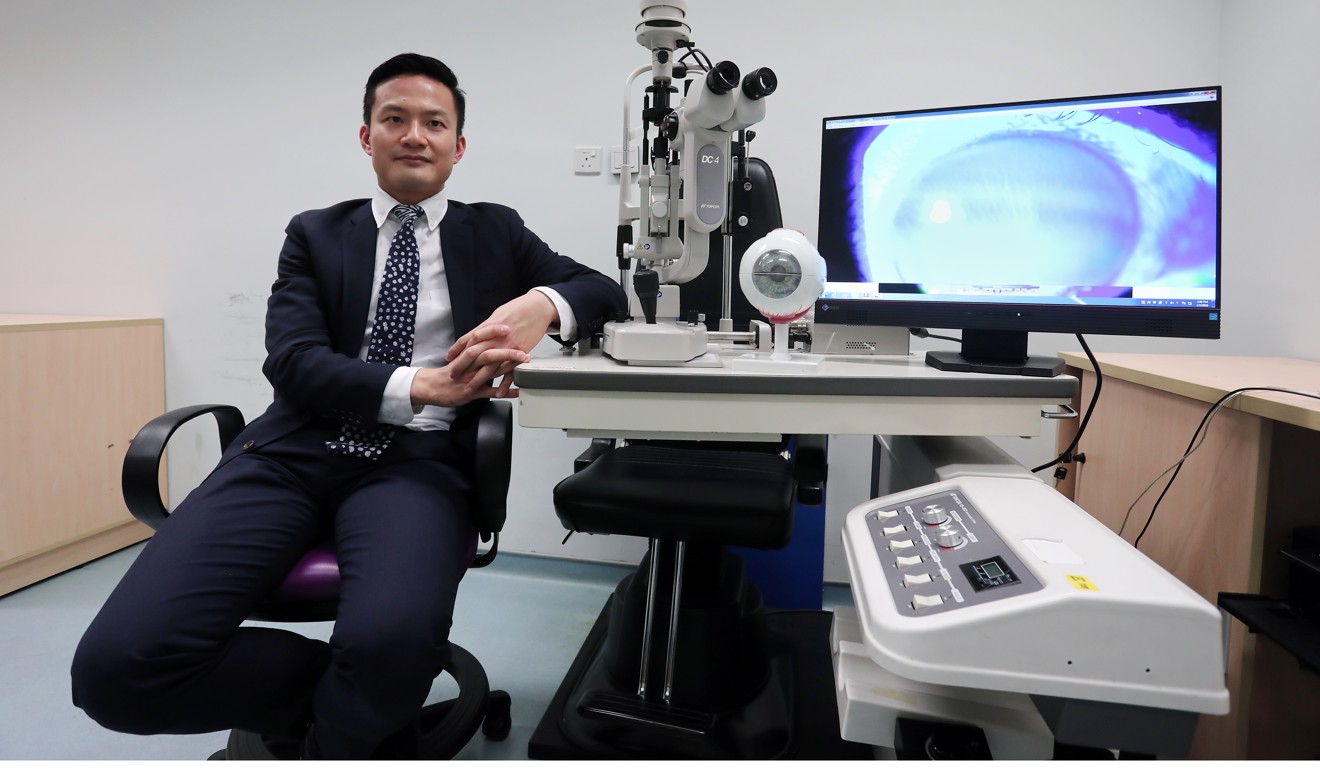
Glaucoma explained, and why regular eye checks are vital for the over-40s
A group of eye diseases associated with optic nerve damage, glaucoma affects three per cent of the population. Sometimes symptom-free, it is often diagnosed too late, and the loss of vision cannot be reversed

Newly diagnosed glaucoma sufferers are often shocked upon learning their failing eyesight cannot be restored to their original acuity, that there is no cure. If unchecked, victims can go blind.
Glaucoma is a group of eye diseases associated with the degeneration of the optic nerve that carries information from the eyes to the brain. This leading cause of irreversible blindness in the city affects three per cent of Hongkongers aged 40 or over, according to the Hospital Authority.
The chronic kind, “primary open angle glaucoma,” is most common and often asymptomatic. Victims may not notice their vision is eroding until much of it has gone.

Inside a healthy eye is a “rim” full of neural tissue; in a patient with glaucoma, that “rim” has thinned, disrupting the vision process. The cause is not fully understood.
“Even in normal people, you lose optic fibres everyday as part of the ageing process, but in glaucoma patients, the loss happens at a far higher rate than the average person,” says Tham.
The eye is full of tissue and fluid, and eye pressure in this organ is what holds it all together. A long-held belief was that high eye pressure compresses the optic nerve, resulting in damage, leading to glaucoma. For years, the medical community knew this wasn’t the full story, as many people with high pressure inside their eyes don’t develop this illness, and a third of glaucoma patients without high pressure in their eyes develop glaucoma, Tham says.

Diagnosis revolves around tests that gauge peripheral vision, and the thickness of optic nerve fibres.
Typically, peripheral vision fails first. Patients complain of bumping into people or running into desks, for example. Evenings out become a challenge; gaps in the visual field lessen sensitivity to light, so reading menus in a dimly lit restaurant can be difficult.
Tham urges people to get their eyes checked every year from the age of 40. This disease tends to run in families, so if your blood relative has it, your risk of glaucoma dramatically increases, he says.
Glaucoma’s genetic implications have been researched extensively since the 19th century. A landmark 1994 study held a population-based survey of 5,308 people in Baltimore and identified 161 with chronic glaucoma. Those with a family member with glaucoma had a two to four times higher risk of this disease.

Other risk factors are those with high eye pressure or other eye conditions like nearsightedness. “Diabetes, migraines, cardiovascular disease, previous eye trauma and long-term steroid use are all increased risk for glaucoma,” he says.
Treatment include drugs, laser procedures, and surgery to drain fluid, all designed to lower eye pressure, to slow the disease’s progression. They cannot, however, recover lost vision.
Anecdotal information online extols lifestyle changes to curtail this disease and the use of supplements such as Ginkgo biloba extract and “resveratrol” (a compound found in the skin of red grapes and berries) for their alleged antioxidant and neuroprotective properties. Tham dismisses such claims.
“The only scientifically tested and proven treatment for glaucoma is lowering intraocular pressure.”
Thyroid eye disease (TED) is a common complication associated with autoimmune thyroid diseases such as Grave’s disease.

Grave’s disease results in hyperthyroidism. Glands in the throat secrete metabolic thyroid hormones but overproduction manifests as symptoms including palpitations, tremors, sweating and unintended weight loss. In seniors, warning signs are shortness of breath, palpitations and fainting.
Ocularplastics focuses on diseases outside the eyeball, including TED.
Dr Kelvin Chong Kam-lung, associate professor at the CUHK Eye Centre, says TED remains one of the most common eye diseases in the world. Yet many, from patients to doctors alike, tend to overlook it.
He said about 93 per cent of the TED patients at the eye clinic in the last seven to 10 years have had a history of thyroid illness.
“Interestingly, we have seven per cent of patients with thyroid eye disease that never tested positive for thyroid dysfunction,” Chong adds.
For decades, doctors were taught that these eye issues resolve themselves once the auto-immune thyroid disease is brought under control. But Chong claims this is a misconception and such an outcome only occurs in the mildest of cases. Current understanding is that a dysfunctional immune system is to blame.
“We think it’s the immune system that somehow attacks the thyroid gland, eye muscle and soft tissue around the eyeball, and that there is no direct link between thyroid hormone function [and thyroid eye disease],” he says.

Blood tests can check for autoimmune thyroid disease.
According to Chong, TED affects more young women. About a third of patients have eye problems six months or more before autoimmune thyroid disease diagnosis; a third of patients develop eye problems within six to 12 months of their thyroid illness diagnosis; and a third of patients whose thyroid disease is in remission develop eye problems later.
Symptoms include bulging or staring eyes, that can be dry, watery or have a feeling of grittiness, swollen eyelids, and redness of the eyeball and eyelids. Restriction of the eyes’ normal movement can also lead to double vision.
Anyone with these symptoms should seek immediate medical attention.
If you have thyroid disease and you are also a smoker, your risk of eye problems is seven times higher
Too often, TED specialists encounter patients when it is already too late. “If they had come in earlier and the problems were managed earlier in their disease course, we could have done some treatment that offered some improvement,” says Chong.

Treatments vary, but include medications to stabilise thyroid hormone levels and reduce inflammation, and immunosuppressant treatments such as eye radiotherapy. Many TED sufferers have permanent eye changes that may require surgery to improve their appearance, such as decompression to relieve compression on the optic nerve or to realign the eye.
Lifestyle changes can lower the risk. Chong says smokers have a threefold higher risk of developing thyroid disease. “If you have thyroid disease and you are also a smoker, your risk of eye problems is seven times higher,” he says.
“If you’re a non-smoker, try to avoid second-hand exposure,” he adds, recalling a case of a non-smoking patient who quit her karaoke job due to thyroid eye disease.
A critical period to address eye problems is in the initial phase of the disease; diagnosed early, more treatment options are available to address the problems.